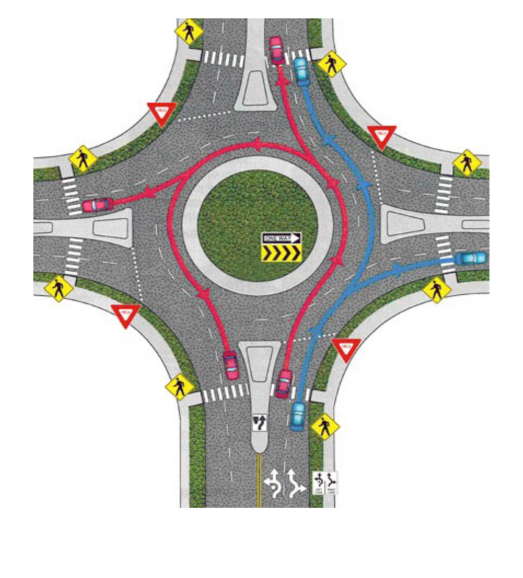Florida Driver Handbook: Roundabouts
Order now5. Driving Safety
- 5.1. Distracted Drivers
- 5.2. Getting Ready to Drive
- 5.3. Defensive Driving
- 5.4. Driving Safety for Mature Drivers - Tips to Help You Drive Safer .... Longer
- 5.5. When You Back Up
- 5.6. Avoiding Rear-end Collisions
- 5.7. Emotions
- 5.8. Basic Driver Improvement
- 5.9. Safety Belts
- 5.10. Protecting Children
- 5.11. Speed Limits
- 5.12. Following Officer's and Fireman's Instructions
- 5.13. Crossing Intersections
- 5.14. Right-of-Way
- 5.15. Stop Signs
- 5.16. Open Intersections
- 5.17. Roundabouts
- 5.18. Driveways
- 5.19. Emergency Vehicles
- 5.20. Making Turns
- 5.21. Turnabout (Three-Point Turn)
- 5.22. Turn Signals and Emergency Signals
- 5.23. Traffic Lanes
- 5.24. Blind Spots
- 5.25. Passing
- 5.26. Minimum Safe Following Distances
- 5.27. Parking
- 5.28. Expressway Driving
- 5.29. Night Driving
- 5.30. Animals
- 5.31. Reduced Visibility
- 5.32. Handling Emergencies
- 5.33. First Aid
Roundabouts are circular intersections with no traffic signal which improve traffic flow and reduce traffic crashes. Roundabouts slow vehicle speed, give drivers more time to judge and react to other vehicles or pedestrians. Drivers entering the roundabout must yield to traffic already in the circle and are directed in one-way, counterclockwise direction. For multi-lane roundabouts, stay in the left lane to turn left and the right lane to turn right, and all lanes to go through, unless otherwise directed by signs or pavement markings. Stay in your lane within the roundabout and use your right turn signal to indicate your intention to exit. Prior to entering or exiting the roundabout, drivers must yield to pedestrians in the crosswalks. Bicyclists may take the lane in the roundabout, or use the sidewalk.

Check out our Customer Reviews!


